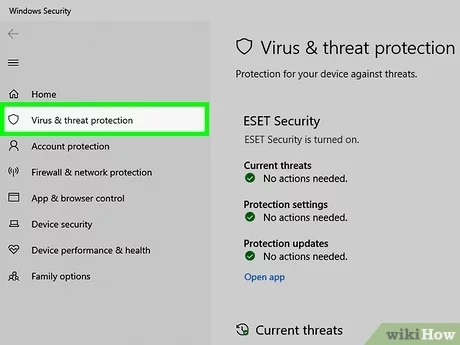How to Remove a Virus

Removing a virus from your computer is a crucial task to restore its security, performance, and functionality. Viruses, along with other forms of malware, can compromise your personal data, slow down your system, and cause various issues. This comprehensive guide will cover methods to detect, remove, and prevent viruses on Windows and macOS systems, ensuring your computer stays safe and protected.
Understanding Viruses and Malware
What is a Virus?
- Definition: A computer virus is a malicious software program designed to replicate itself and spread to other computers or systems. Viruses can perform harmful activities such as deleting files, stealing personal information, or disrupting system operations.
Signs of a Virus Infection
- Slow Performance: Sudden slowdowns in system speed or responsiveness.
- Pop-up Messages: Unexpected pop-ups or advertisements appearing frequently.
- Unusual Behavior: Strange errors, crashes, or programs launching on their own.
- Increased Network Activity: Unexplained data usage or network activity.
Types of Malware
- Viruses: Self-replicating programs that attach themselves to other files or programs.
- Trojans: Malware disguised as legitimate software, often used for stealing data or giving remote access to attackers.
- Ransomware: Encrypts files and demands payment for decryption.
- Spyware: Collects information about users without their knowledge.
- Adware: Displays unwanted advertisements.
How to Remove a Virus on Windows
Step 1: Disconnect from the Internet
- Disable Wi-Fi or Ethernet: Prevent the virus from communicating with its source or spreading to other devices.
Step 2: Enter Safe Mode
- Restart Your Computer: Press and hold the Shift key while clicking Restart to enter Advanced Startup Options.
- Choose Safe Mode: Select “Safe Mode” or “Safe Mode with Networking” to start Windows with minimal drivers and services.
Step 3: Use Antivirus Software
- Scan Your Computer: Run a full system scan using reputable antivirus software.
- Remove Threats: Follow prompts to quarantine or delete detected viruses and malware.
- Update Antivirus: Ensure antivirus definitions are up to date to detect the latest threats.
Step 4: Use Windows Defender (Windows 10 and later)
- Open Windows Security: Go to Settings > Update & Security > Windows Security.
- Run Full Scan: Click on “Virus & threat protection” > “Scan options” > “Full scan.”
Step 5: Remove Suspicious Programs
- Uninstall Suspicious Programs: Go to Control Panel > Programs > Programs and Features.
- Sort by Date: Remove any recently installed programs that may be associated with the virus.
Step 6: Restore System
- System Restore (Optional): If available, use System Restore to revert to a previous system state before the virus infection.
Step 7: Reset Browser Settings
- Reset Browsers: Remove malicious extensions and reset browser settings to default.
Step 8: Update Passwords and Security Settings
- Change Passwords: Update passwords for online accounts and banking to prevent unauthorized access.
- Enable Two-Factor Authentication: Add an extra layer of security to accounts where available.
How to Remove a Virus on macOS
Step 1: Disconnect from the Internet
- Turn Off Wi-Fi: Disable Wi-Fi to prevent the virus from accessing the internet or spreading.
Step 2: Use Activity Monitor
- Open Activity Monitor: Go to Applications > Utilities > Activity Monitor.
- Identify Suspicious Processes: Look for unfamiliar or suspicious processes consuming high CPU or memory.
Step 3: Install and Run Malware Removal Tools
- Download Reputable Software: Install and run malware removal tools like Malwarebytes for Mac.
- Scan Your Mac: Perform a full system scan to detect and remove malware.
Step 4: Remove Suspicious Apps
- Delete Unwanted Apps: Go to Applications folder and drag unwanted apps to Trash.
- Empty Trash: Right-click Trash and select “Empty Trash” to permanently delete apps and associated files.
Step 5: Update macOS and Software
- Install Updates: Ensure macOS and all apps are up to date to patch security vulnerabilities.
Step 6: Reset Browser Settings
- Reset Browsers: Remove malicious extensions and reset browser settings to default.
Step 7: Review Security and Privacy Settings
- Check Firewall: Ensure macOS firewall is enabled to block unauthorized network connections.
- Privacy Settings: Review and restrict apps’ access to sensitive data under System Preferences > Security & Privacy.
Best Practices to Prevent Virus Infections
- Use Antivirus Software: Install reputable antivirus software and keep it updated.
- Enable Firewall: Activate built-in firewalls on Windows and macOS to monitor incoming and outgoing traffic.
- Be Cautious Online: Avoid clicking on suspicious links, downloading unknown attachments, or visiting unsafe websites.
- Backup Regularly: Maintain regular backups of important files to restore data in case of a virus attack.
- Educate Users: Teach safe computing practices to family members or employees to prevent malware infections.
Conclusion
Removing a virus from your computer requires a systematic approach to detect, isolate, and eliminate malicious software. By following the steps outlined in this guide for both Windows and macOS systems, you can effectively rid your computer of viruses and restore its security and performance. Regularly update your antivirus software, practice safe browsing habits, and remain vigilant against new threats to keep your system protected from malware infections in the future. If unsure about the severity of an infection or if the virus persists after removal attempts, consider seeking professional assistance from IT experts or tech support.




